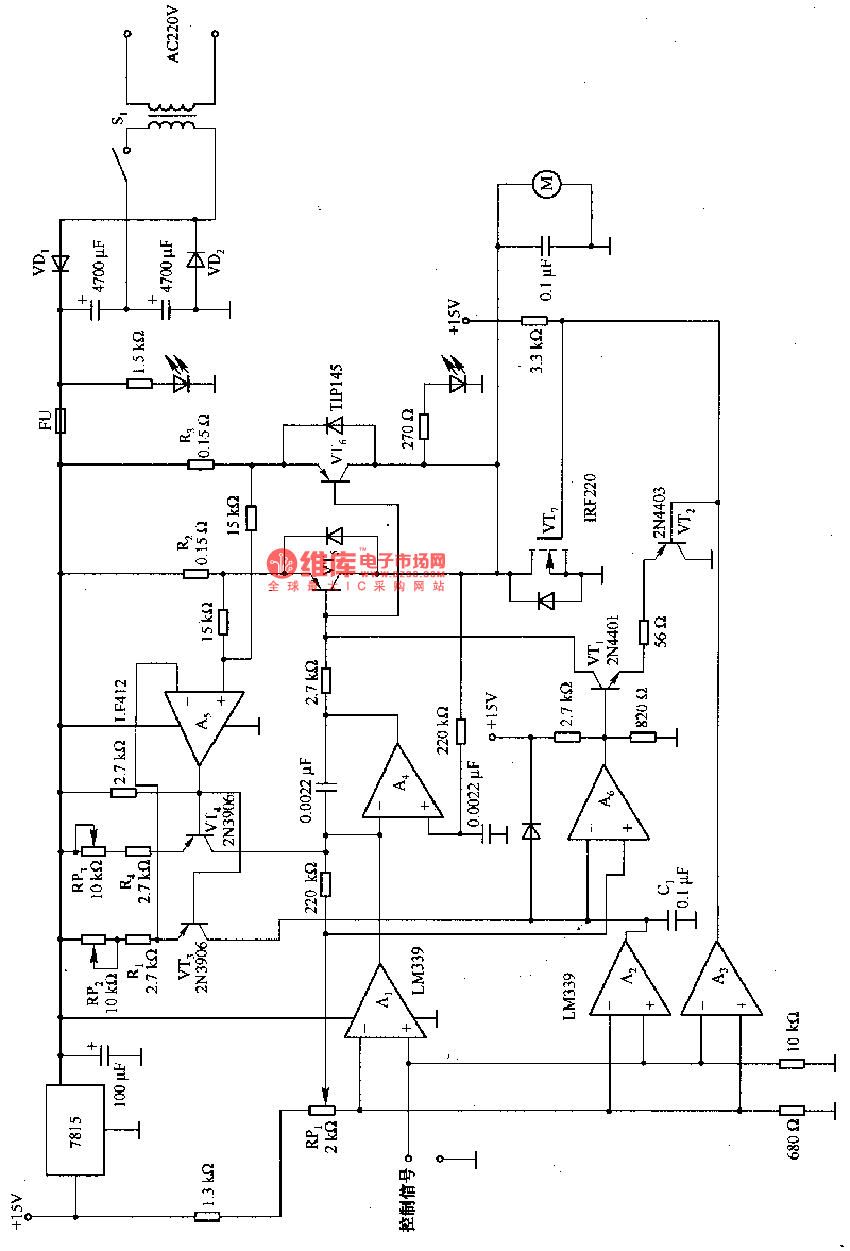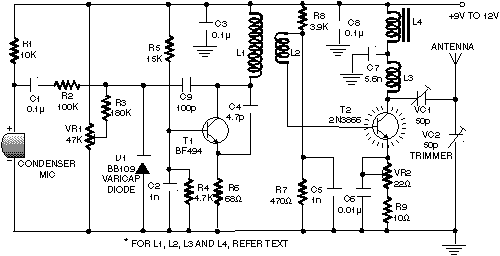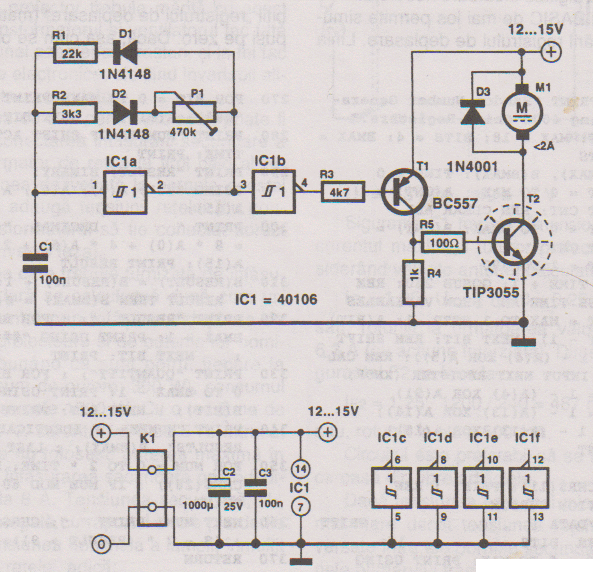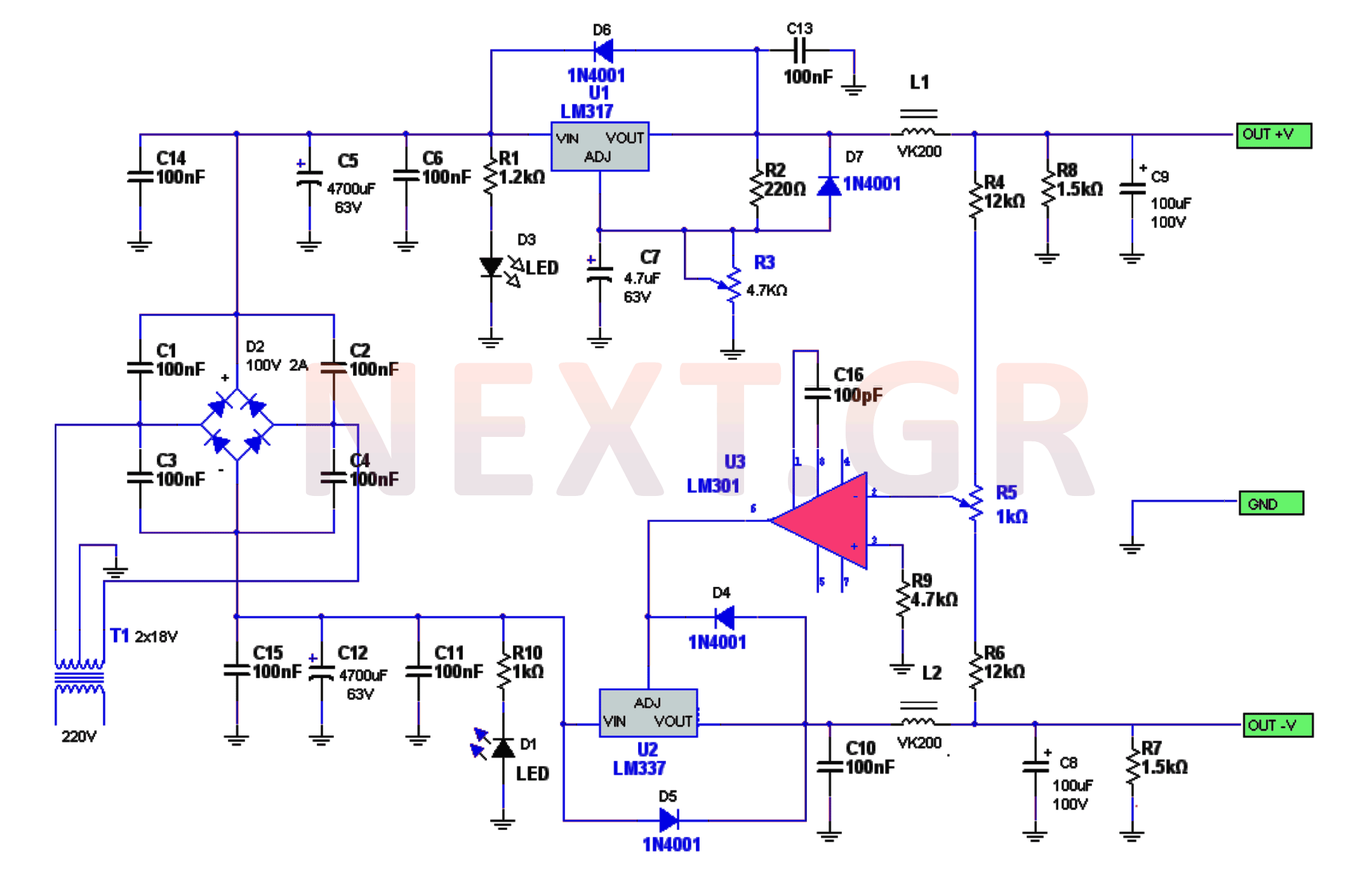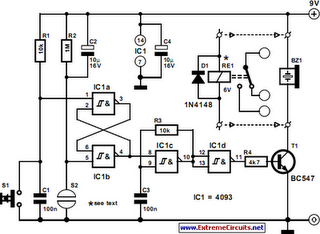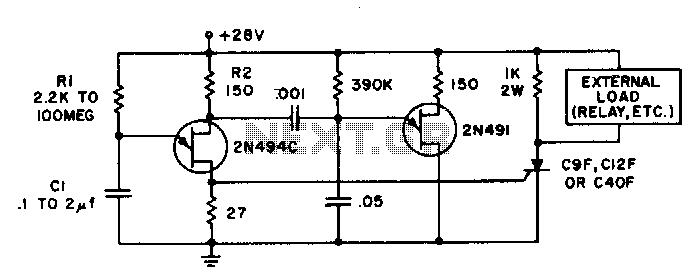
Enhanced AE1169 made lock circuit diagram
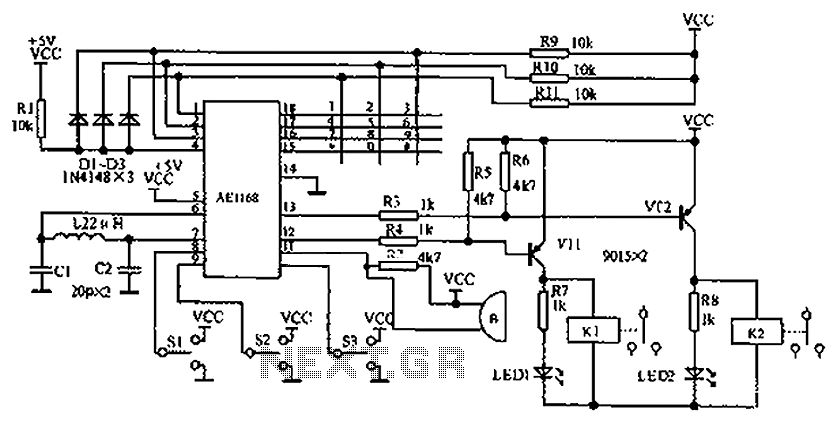
The circuit diagram represents an enhanced lock system, the AE1169, which is an upgrade of the AE1168 model. When the lock button is pressed, the AE1168 utilizes a keyboard scanning method to identify the corresponding button. Based on the states of S1, S2, and S3, the internal logic performs an analysis that activates the alarm relay K1 and the corresponding relay control for K2. This circuit features a 12-bit quasi-keyboard where the '*' key serves as a confirmation key, while another key functions as a clear key. If an incorrect password is entered, the input error can be cleared by pressing the clear key without needing to confirm with the '*' key. By toggling S1, S2, and S3, the system can easily accommodate multiple user functions, including collective, multiplayer, and single user modes.
The AE1169 enhanced lock system circuit is designed to provide a robust security solution with advanced user interaction capabilities. The core of the design revolves around a microcontroller that interprets inputs from the 12-bit quasi-keyboard. The keyboard is structured to allow multiple configurations, enhancing flexibility in usage scenarios. The keys are categorized as functional keys, with specific roles assigned to each, such as the '*' key for confirmation and an additional key for error clearance.
Upon pressing the lock button, the system initiates a keyboard scan to detect which key has been pressed. The states of S1, S2, and S3 are critical as they determine the operational mode of the lock system. The internal logic circuitry interprets these states to execute the appropriate response, such as activating the alarm relay K1 or controlling relay K2, which may trigger an alarm or lock mechanism.
The design also incorporates a fail-safe mechanism. If a user inputs an incorrect password, the clear key can be utilized to reset the input without needing to confirm through the '*' key. This feature minimizes frustration for users and enhances the efficiency of the locking mechanism.
The switch configurations (S1, S2, S3) allow for easy toggling between different operational modes, enabling collective access for multiple users, as well as modes for single-user access. This flexibility is particularly beneficial in environments where access control needs to be managed dynamically.
In summary, the AE1169 enhanced lock system circuit offers a sophisticated approach to security, combining user-friendly input methods with reliable electronic control mechanisms, suitable for various applications requiring secure access management. As shown in Figure is a circuit diagram of an enhanced lock the AE1169. AE1168 enhanced when the lock button is pressed, AE1168 through the keyboard scan to determine the corre sponding button, and in accordance with S1, S2, S3 state, the internal logic analysis treated, and the alarm relay K1, * K2 corresponding relay control. Circuit 12-bit quasi-keyboard, which represents the * key to confirm; key is the clear key, if they enter the wrong password, as long as the failure to confirm the * key, you can press this key to clear the input error.
By switching S1, S2, S3 can easily achieve more than the collective *, multiplayer and single * alone * function.
The AE1169 enhanced lock system circuit is designed to provide a robust security solution with advanced user interaction capabilities. The core of the design revolves around a microcontroller that interprets inputs from the 12-bit quasi-keyboard. The keyboard is structured to allow multiple configurations, enhancing flexibility in usage scenarios. The keys are categorized as functional keys, with specific roles assigned to each, such as the '*' key for confirmation and an additional key for error clearance.
Upon pressing the lock button, the system initiates a keyboard scan to detect which key has been pressed. The states of S1, S2, and S3 are critical as they determine the operational mode of the lock system. The internal logic circuitry interprets these states to execute the appropriate response, such as activating the alarm relay K1 or controlling relay K2, which may trigger an alarm or lock mechanism.
The design also incorporates a fail-safe mechanism. If a user inputs an incorrect password, the clear key can be utilized to reset the input without needing to confirm through the '*' key. This feature minimizes frustration for users and enhances the efficiency of the locking mechanism.
The switch configurations (S1, S2, S3) allow for easy toggling between different operational modes, enabling collective access for multiple users, as well as modes for single-user access. This flexibility is particularly beneficial in environments where access control needs to be managed dynamically.
In summary, the AE1169 enhanced lock system circuit offers a sophisticated approach to security, combining user-friendly input methods with reliable electronic control mechanisms, suitable for various applications requiring secure access management. As shown in Figure is a circuit diagram of an enhanced lock the AE1169. AE1168 enhanced when the lock button is pressed, AE1168 through the keyboard scan to determine the corre sponding button, and in accordance with S1, S2, S3 state, the internal logic analysis treated, and the alarm relay K1, * K2 corresponding relay control. Circuit 12-bit quasi-keyboard, which represents the * key to confirm; key is the clear key, if they enter the wrong password, as long as the failure to confirm the * key, you can press this key to clear the input error.
By switching S1, S2, S3 can easily achieve more than the collective *, multiplayer and single * alone * function.
